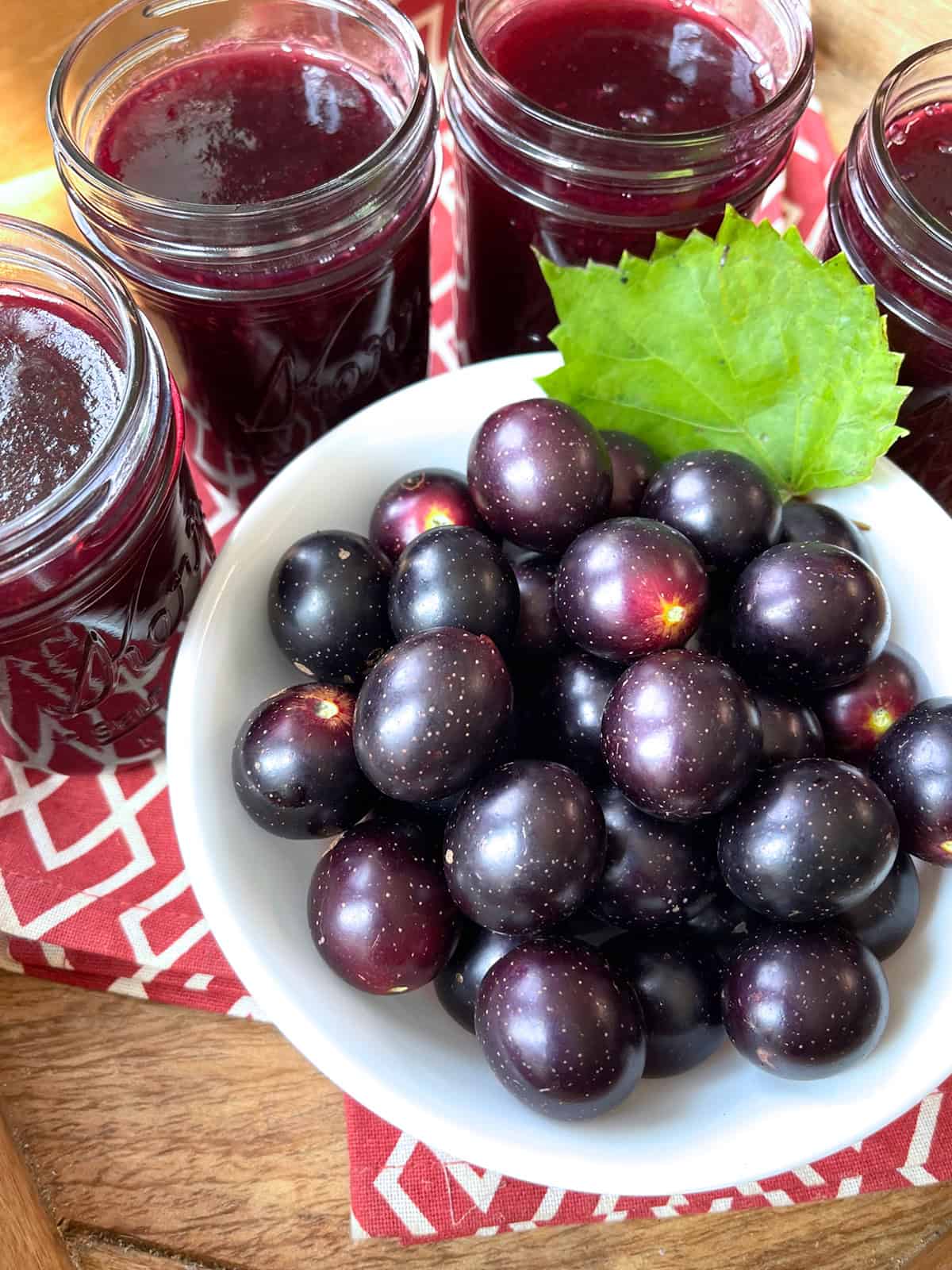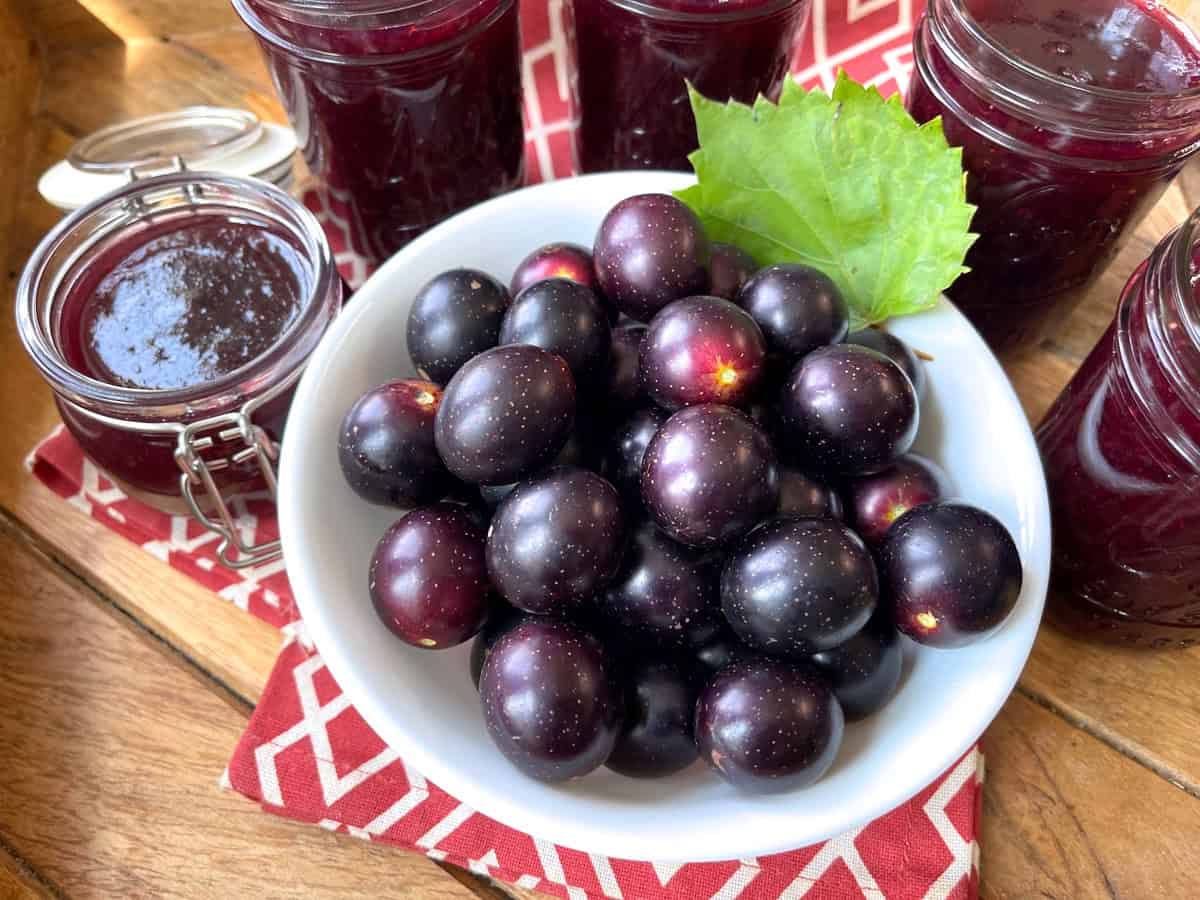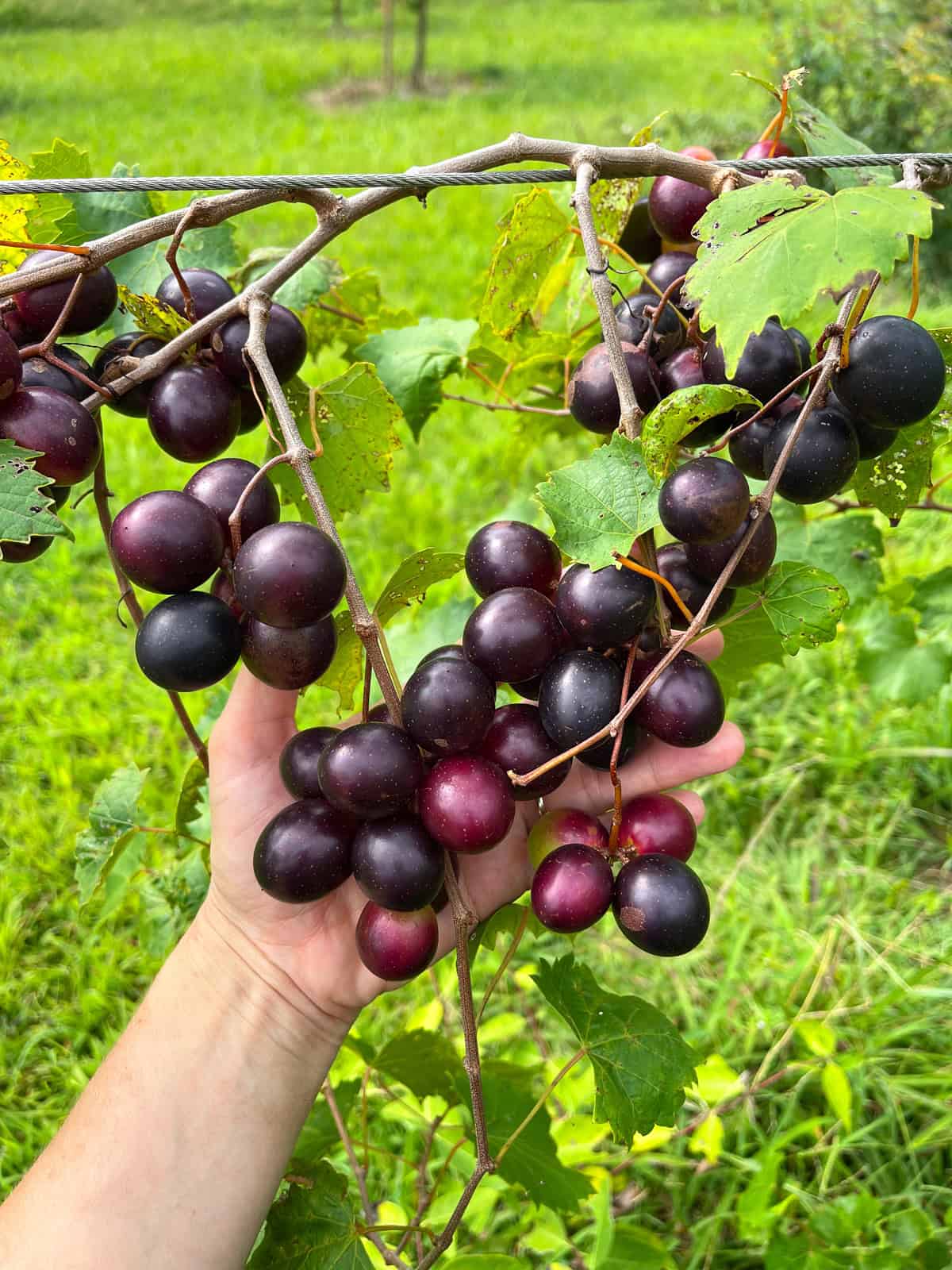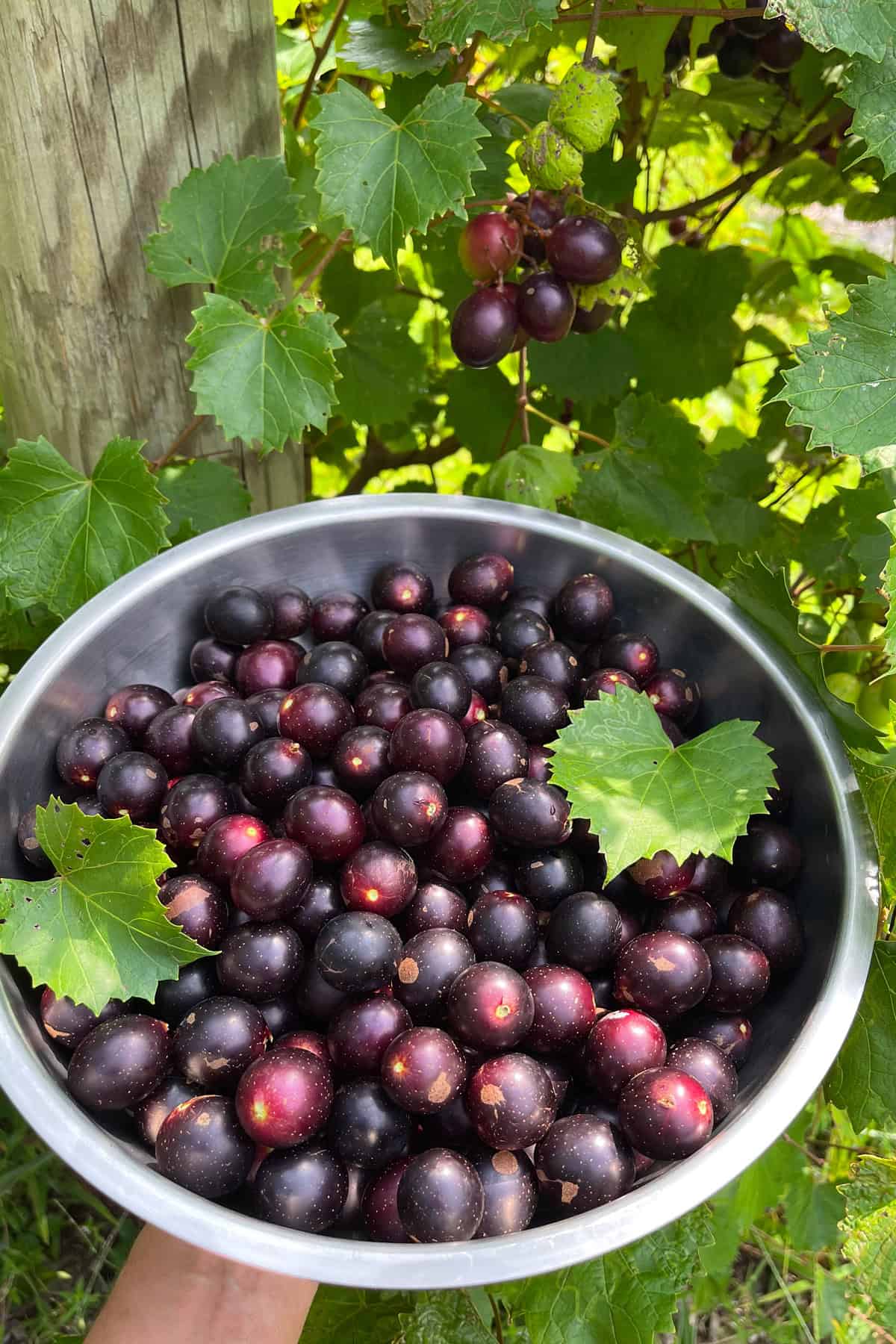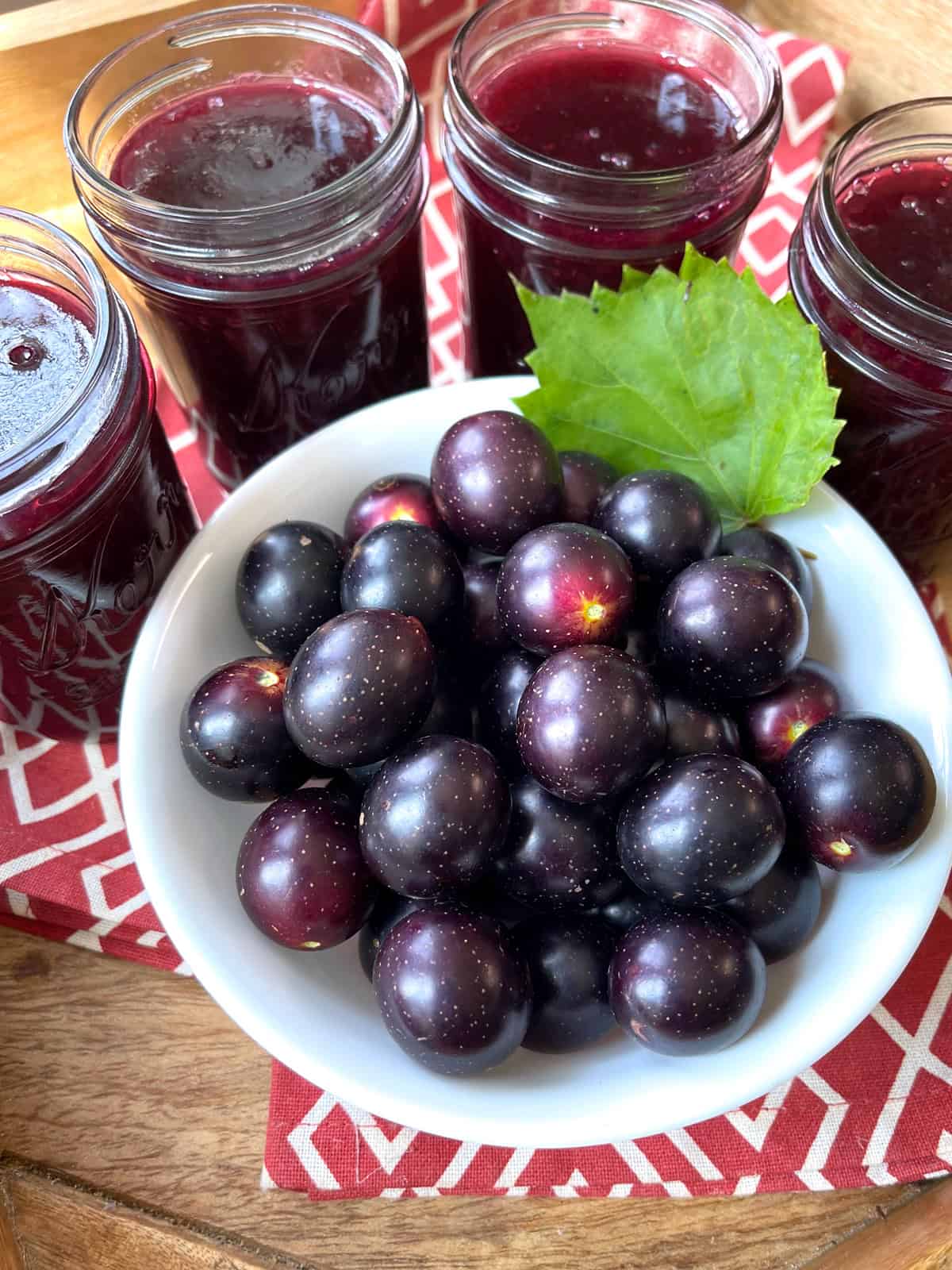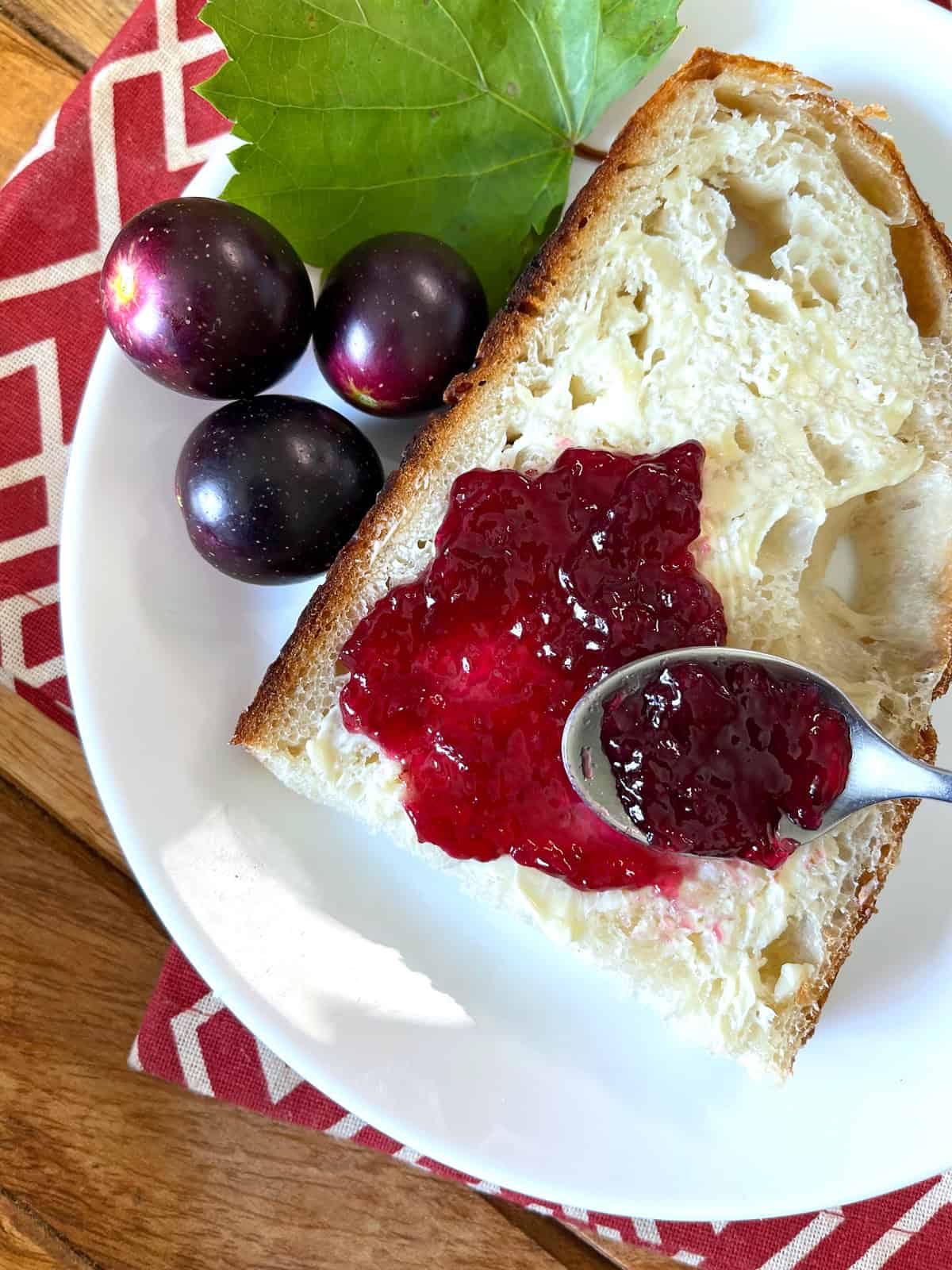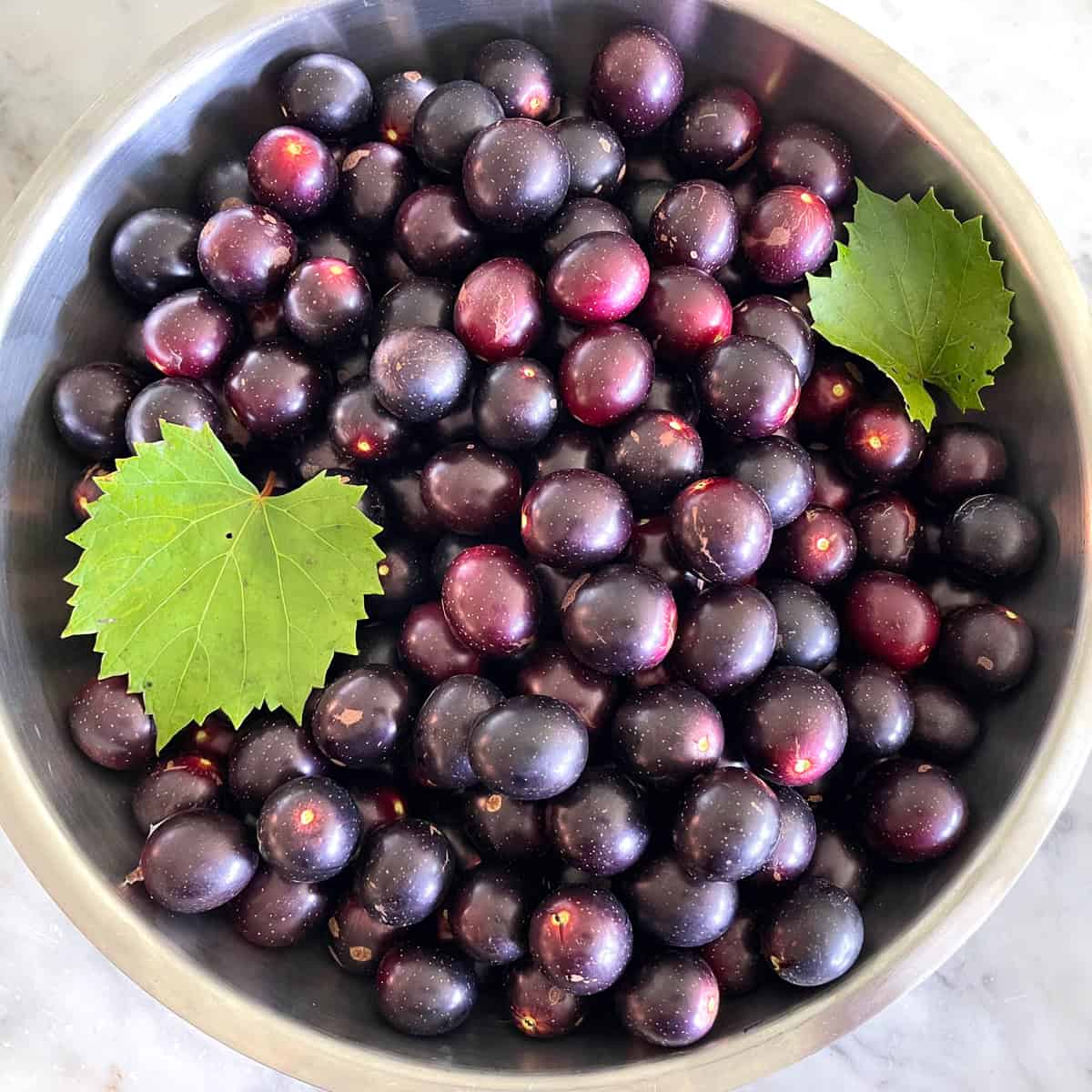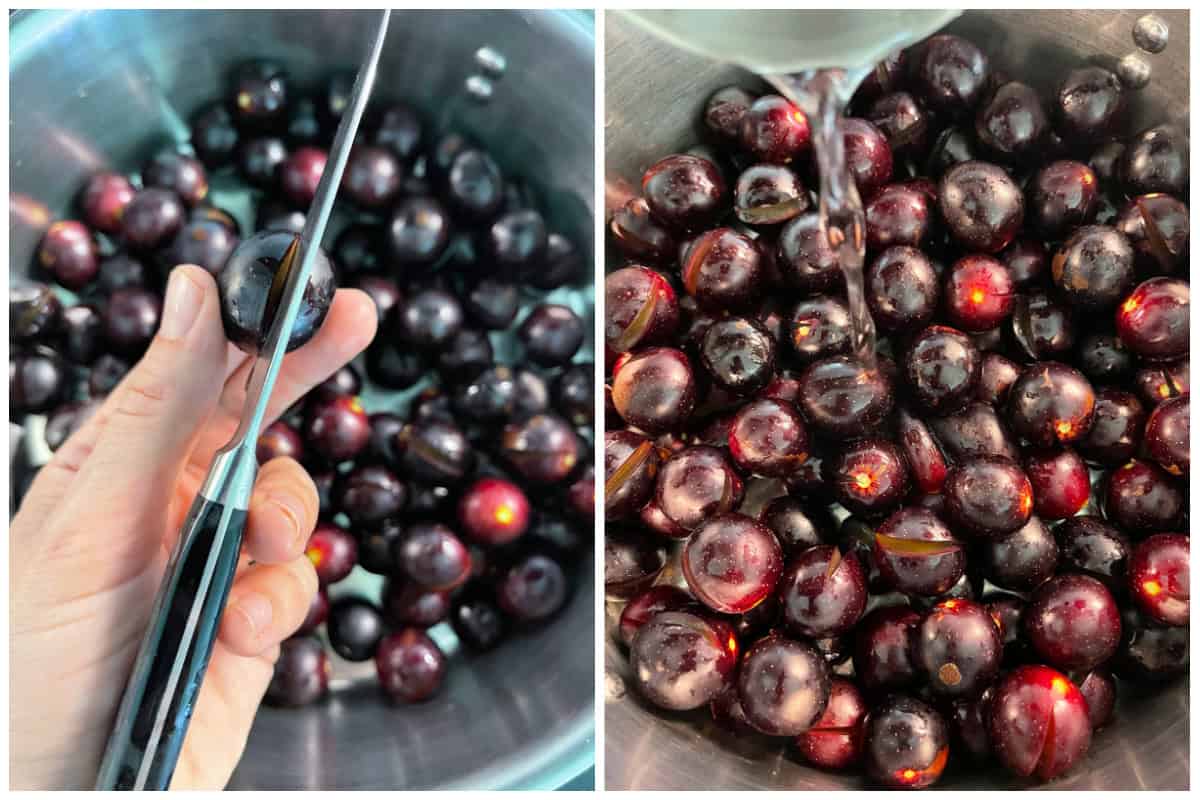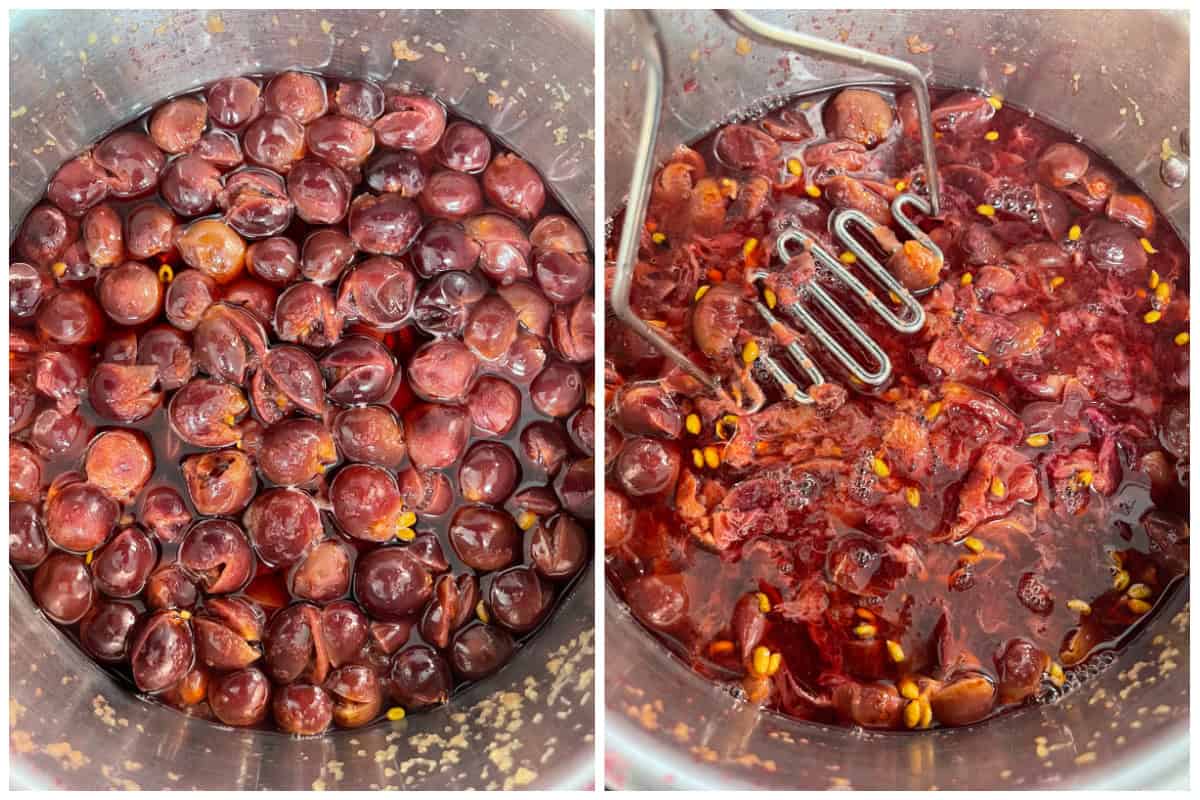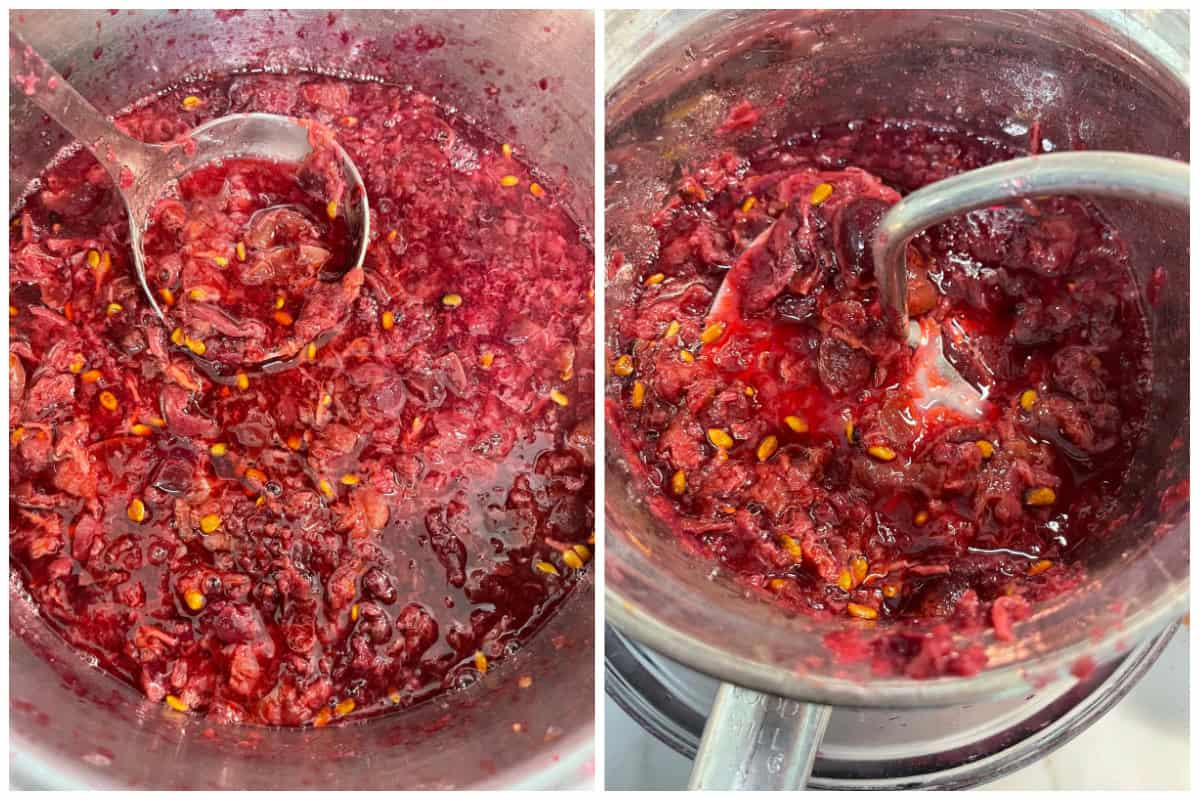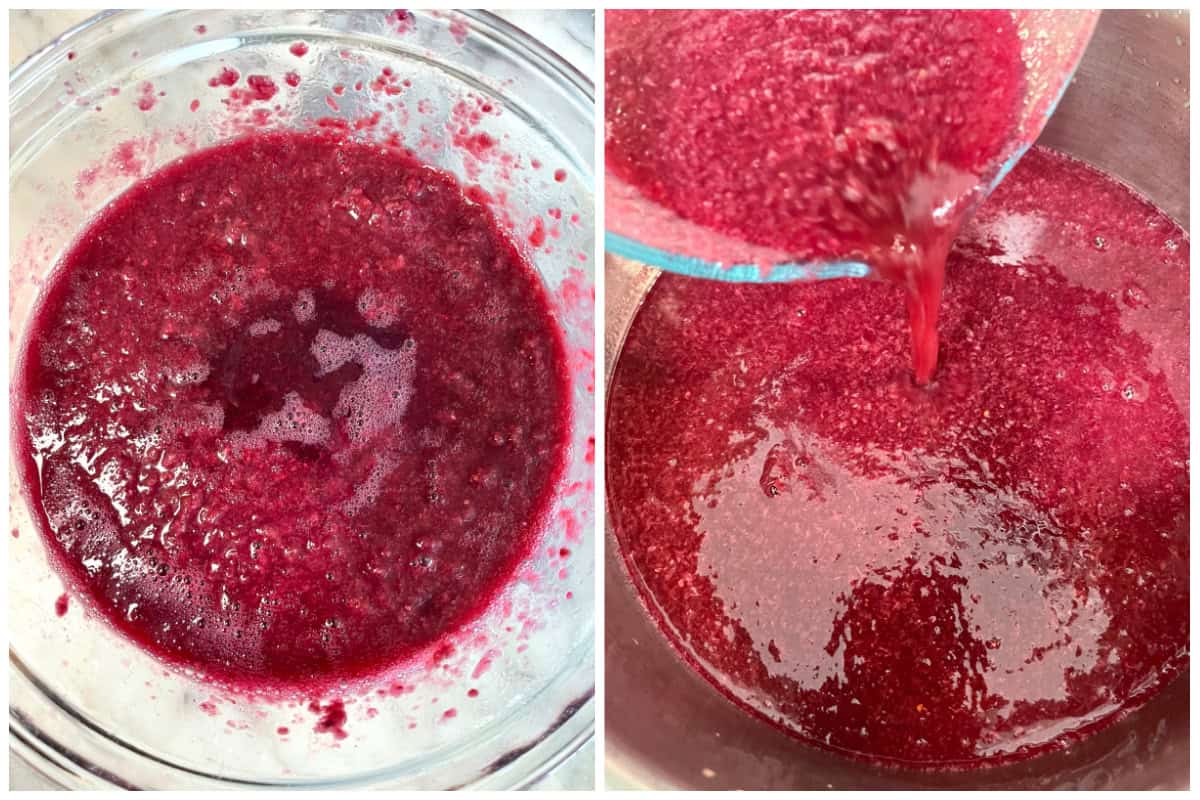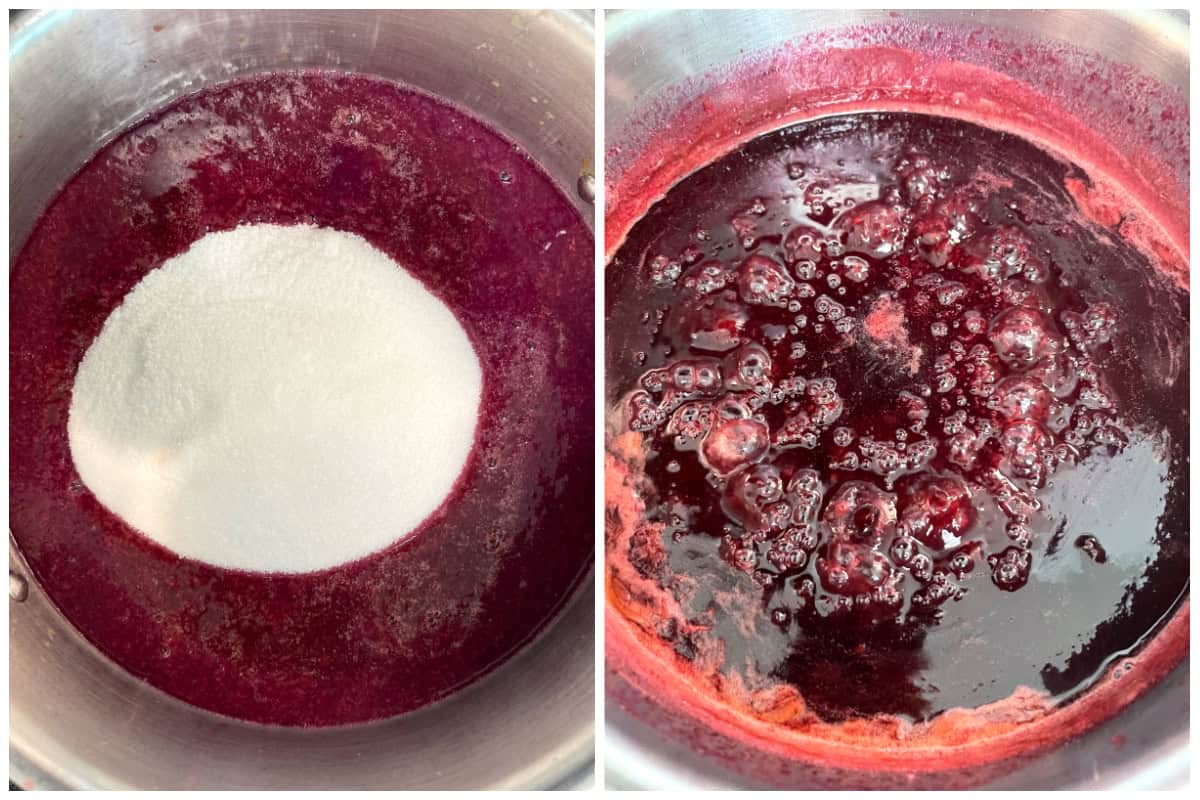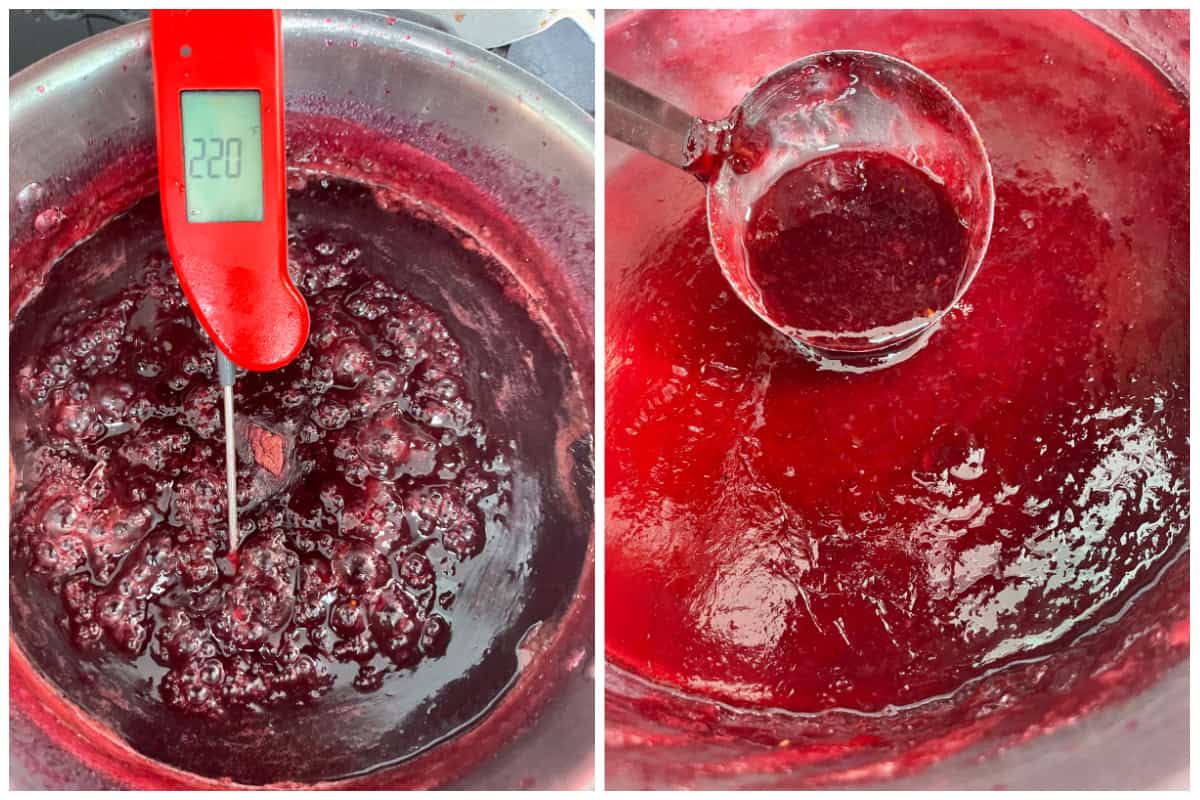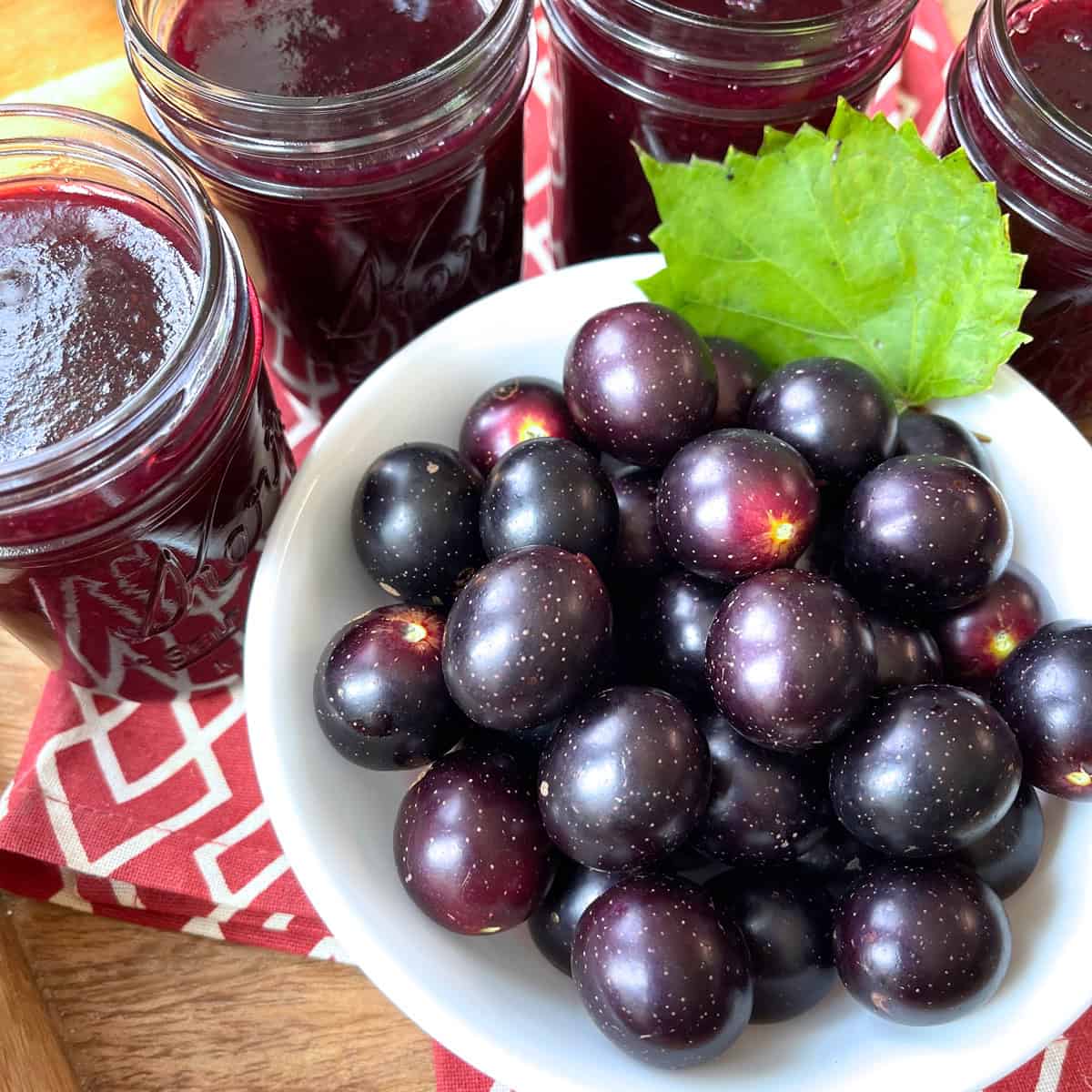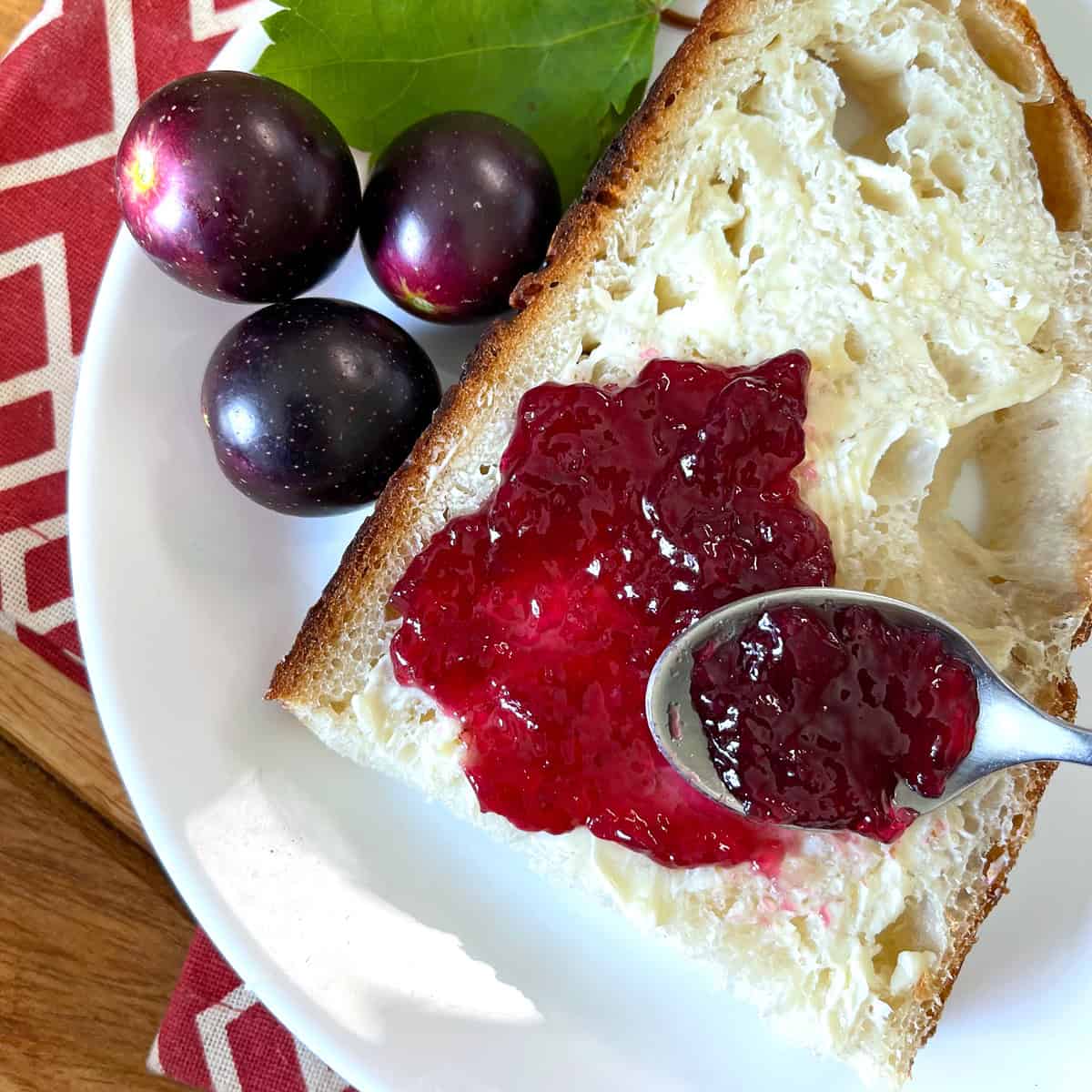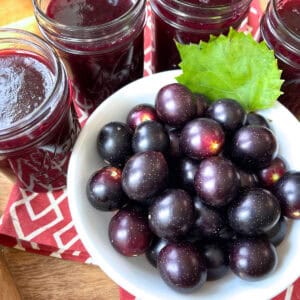A Muscadine jelly recipe without pectin! This will keep in the fridge for a few months or can be processed in a water bath to keep for a least a year. This homemade muscadine jelly captures all the flavor and charm of the South’s most famous native fruit and is deliciously versatile for both sweet and savory dishes! Three years ago we moved 3000 miles from one side of the country to the other and became Southerners in the beautiful state of Virginia. We lost no time in exploring ALL of the Southern States – every one – sampling the traditional delicacies of the South, everything from Boiled Peanuts and Shrimp and Grits to Fried Okra and Jambalaya. It was my Georgia born-and-bred mother-in-law who introduced me to something I had never heard before: Muscadines. We were on a road trip to Savannah and pulled off at roadside stand to get some. I’ll never forget that first bite: the unexpectedly tough skin followed by that sudden burst of juicy Jolly Rancher grape sweetness. I spit the seeds into a bag and popped the next one in my mouth, savoring this newly discovered jewel of the South. So guess what we did the first year we moved to Virginia, having left behind the orchard we had planted in Washington State? We planted a new orchard – and included 4 varieties of muscadines (dark purple) and scuppernongs (the golden yellow variety of muscadines). Three years later we’re harvesting loads and loads of these beautifully sweet and flavorful Southern globes! And muscadine jelly is the perfect way to preserve that flavor to enjoy all year long.
What are Muscadines?
Muscadines are a type of grape native to the southeastern United States. Like European grapes they grow on vines and can be trellised. Unlike European grapes that are very pest and disease-prone, muscadines are very hardy and naturally pest and disease resistant. Muscadines are known for their distinctive sweet flavor, thick skins, and large size compared to their European cousins. They have a deep, fruity flavor that is more complex and more intense than regular grapes. They have thick skins that are usually either a very dark purple or a dark golden bronzy yellow, the latter also called scuppernongs). They are eaten fresh, made into a popular Southern wine, turned into jelly or jam or sorbet, and are baked into what is known as Muscadine Grape Hull Pie, an old specialty of the South.
Muscadines have a deep cultural significance in the South that is still treasured by many, especially when you venture into North Carolina or as far down as Georgia. In fact, in the 19th century North Carolina was one the largest wine produces in the United States and guess which grapes they were using? You got it – muscadines. Muscadine wine was highly regarded for its unique flavor and remains an important part of North Carolina’s winemaking tradition. Whether enjoyed fresh, made into jelly, or crafted into wine, muscadines offer a unique taste experience that reflects their rich heritage throughout the South.
Now that we’ve started growing our own muscadines it’s been rewarding finding new and delicious ways to use them.
What is Muscadine Jelly?
Muscadine jelly is a hidden gem of Southern cuisine. It’s a fruit preserve made from muscadine grapes which are native to the Southeastern United States. It’s made by simmering the fruits until they’re soft, mashing and straining them, and boiling their juice with sugar until thickened. The congealing of the muscadine jelly can be achieved in one of two ways: by adding pectin or made without pectin by boiling the juice and sugar until it reaches 220 degrees F at which point it will naturally congeal. I’m sharing with you a muscadine jelly recipe without pectin. With massive harvest of muscadines we’re having this Summer, I’ve been a lot of muscadine jelly and muscadine jam because it tastes fabulous, is easy to can, and keeps for a very long time. It also makes the perfect gift to send to family and friends in other areas of the country because it’s so unique and can’t be found anywhere else.
How to Use Muscadine Jelly
Whether you’re enjoying it on a slice of toast, adding it to desserts, or using it to enhance a savory dish, muscadine jelly is deliciously versatile and brings a unique and delightful taste to the table. Here are just a few ways you can enjoy it:
Bread/toast, peanut butter and jelly sandwiches, buttered rolls, scones, English muffins or Crumpets. Pancakes and waffles (try my whole wheat sourdough waffles) Cheesecake (try our German Cheese Cake) Ice cream In vinaigrettes and marinades As a glaze for chicken, pork, and meatballs With grilled or roasted duck, game or seafood In tarts, pies, cakes, muffins, puddings, cookie bars, and other pastries Stirred into homemade Greek Yogurt or Rice Pudding Mixed in your favorite bbq sauce for a nice fruity contrast
Muscadine Jelly Recipe
Let’s get started!
Note: This is a small batch recipe, which makes 4-5 half pints. This muscadine jelly recipe can be doubled.
Wash and drain the muscadines, discarding any leaves and stems.
Slice each muscadine down the center and place them in a large pot.
Pour 1 cup of water over them and slowly bring it to a boil, stirring frequently to prevent scorching. You do not want the fruit at any point to burn.
Once it comes to a boil, reduce the heat to low-medium, cover and simmer for 30-40 minutes, stirring occasionally to prevent burning.
Mash the fruit with potato masher.
Transfer the mashed fruit and liquid to a food mill positioned over a large bowl. Run the fruit mixture through the food mill allowing all the liquid and pulp to go into the bowl. Discard the leftover skins and seeds.
Note: If you don’t have a food mill you can press the mixture through a potato ricer or scrape it through a large fine mesh sieve.
Measure out 4 cups of juice. If it’s just slightly less that’s okay.
I call this muscadine jelly instead of muscadine jam because although I like to leave the pulp in, there are no perceptible “bits” in the final product. The pulp is so fine the result is very much a jelly in its consistency. If you prefer a perfectly clear jelly you can strain the mixture in a fine mesh cheesecloth. Note that this will result in less than 4 cups of liquid so if you plan on straining out the pulp, I recommend using closer to 3 1/2 pounds of muscadines instead of the 2 1/2 pounds called for.
If you prefer a muscadine jam with some chunks in it, remove some of the mashed fruits before running the rest through the food mill, discard any seeds, and then add them back to the mixture you ran through the food mill.
Pour the pureed mixture back into the pot. Bring it to a boil and add the sugar and lemon juice, stirring until the sugar is dissolved.
Reduce the heat slightly but keep it at a steady boil for about 20 minutes or until an instant read or candy thermometer registers 220 F / 105 C. I strongly recommend using a thermometer when you’re making jams and jellies without pectin because it takes any of the guesswork out of it it terms of when it’s done.
Alternatively you can test it after about 20 minutes with the wrinkle test: Keep a plate in the freezer during the boiling process so it’s nice and cold. Pour a small spoonful of the jelly on the cold plate and wait a few seconds before pushing the jelly with your finger. If it has formed a skin on the top and wrinkles when you push it, the muscadine jelly is done. If it doesn’t, continue to boil the mixture and test again.
Skim off any foam on top of the jelly.
Ladle the hot muscadine jelly into sterilized jars and secure with lids. If storing in the fridge, let the jars cool completely before placing them in the fridge. Muscadine jelly or muscadine jam will store in the fridge for a few months. Just check for any signs of mold and discard if there is any present.
If canning, follow proper protocol for water bath canning and process the jars for 5 minutes. Carefully remove them, let them cool completely, and store them in a dark, cool place. The muscadine jelly will keep for at least a year.
Enjoy it as a spread for bread or use it in any number of ways, both sweet or savory (see blog post above for ideas).
Enjoy!
For more homemade jams and jellies try my:
Blueberry Jam Blackberry Jam Black Currant Jam Huckleberry Jam Gooseberry Jam Plum Jam Plum Butter Strawberry Rhubarb Jam Red Currant Jelly Blueberry Lemon Apricot Jam Peach Bacon Jam Lemon Lime Marmalade
Read more about me…
